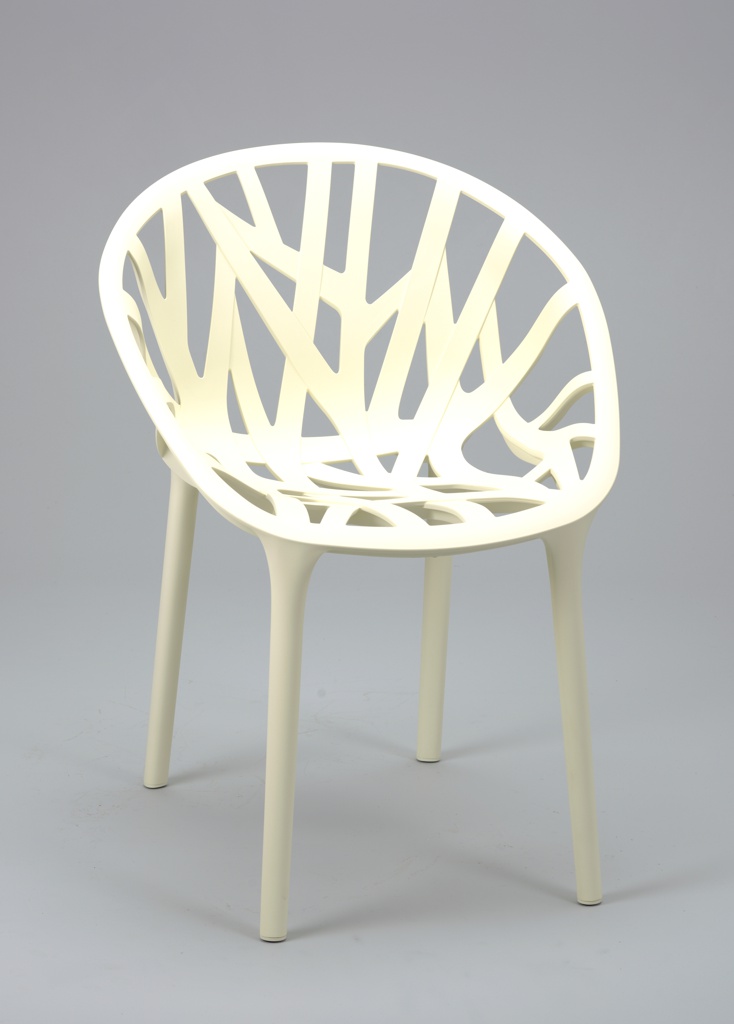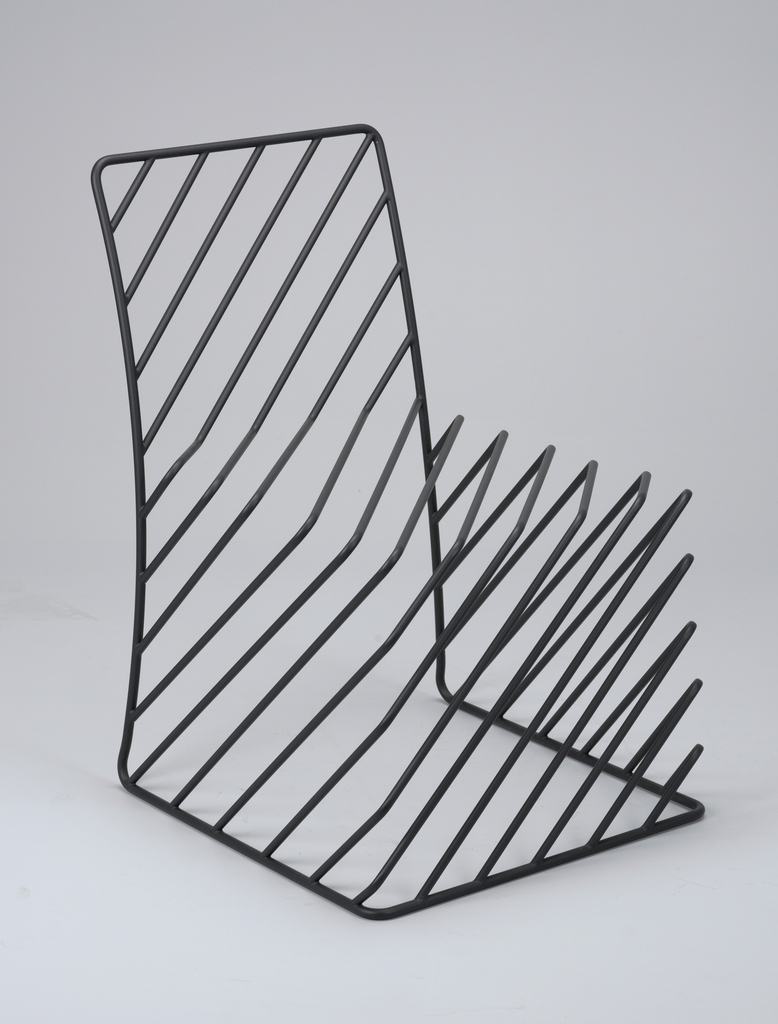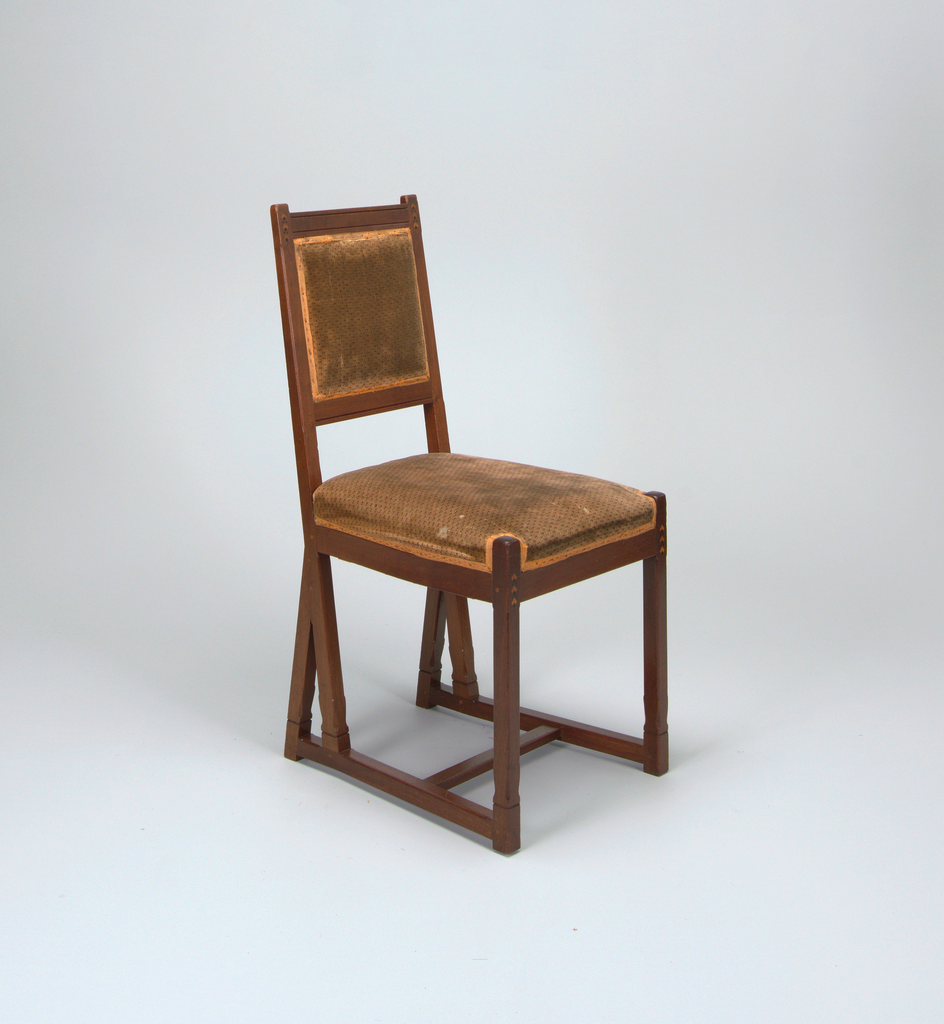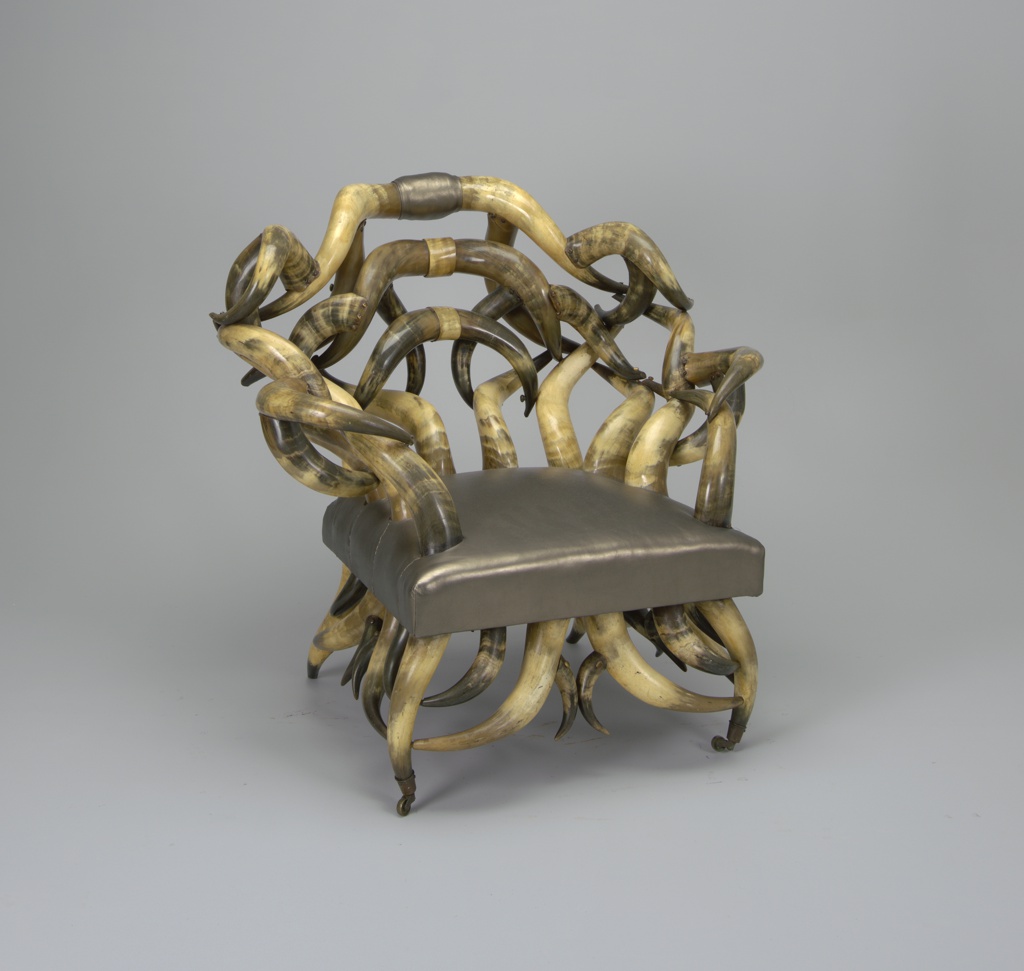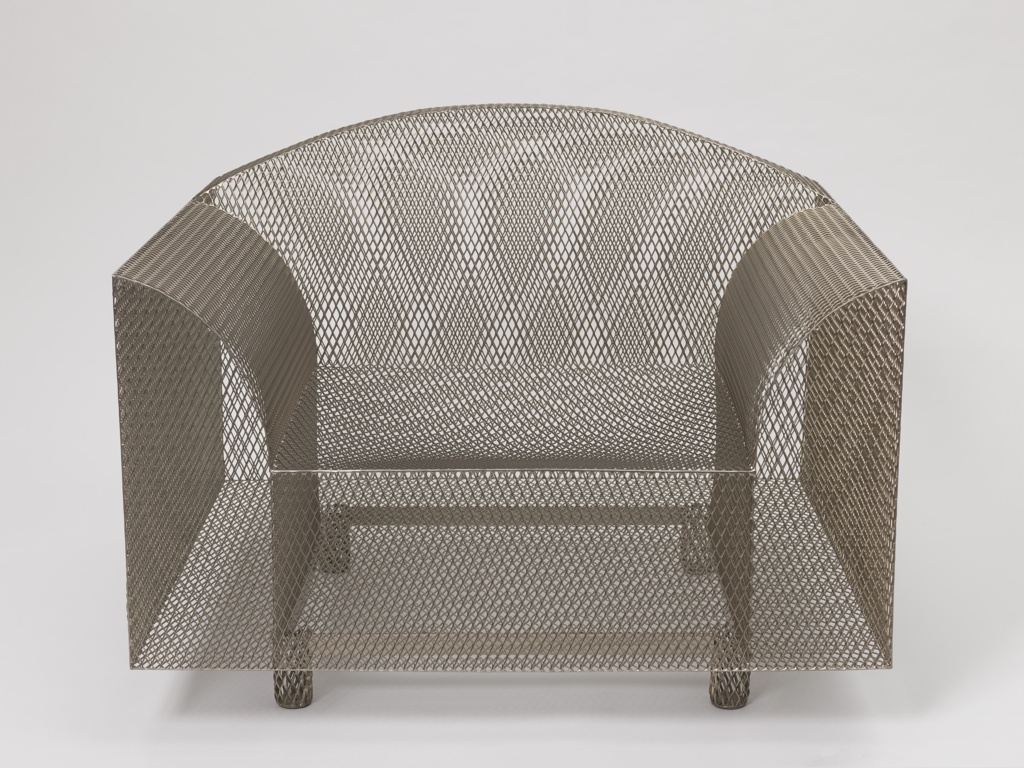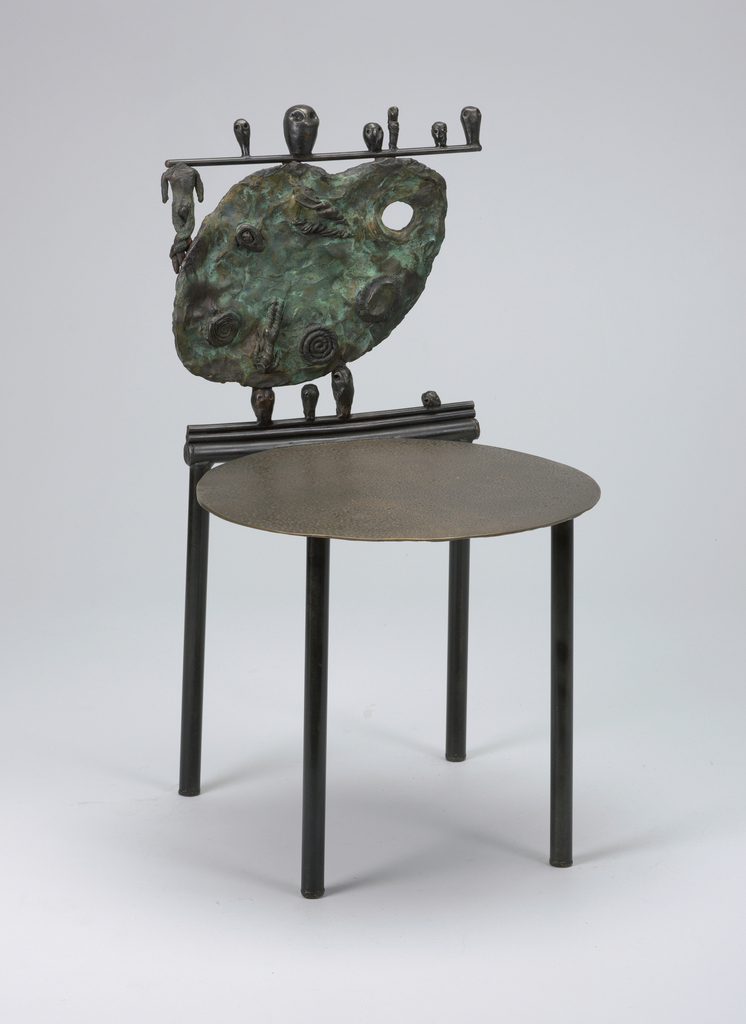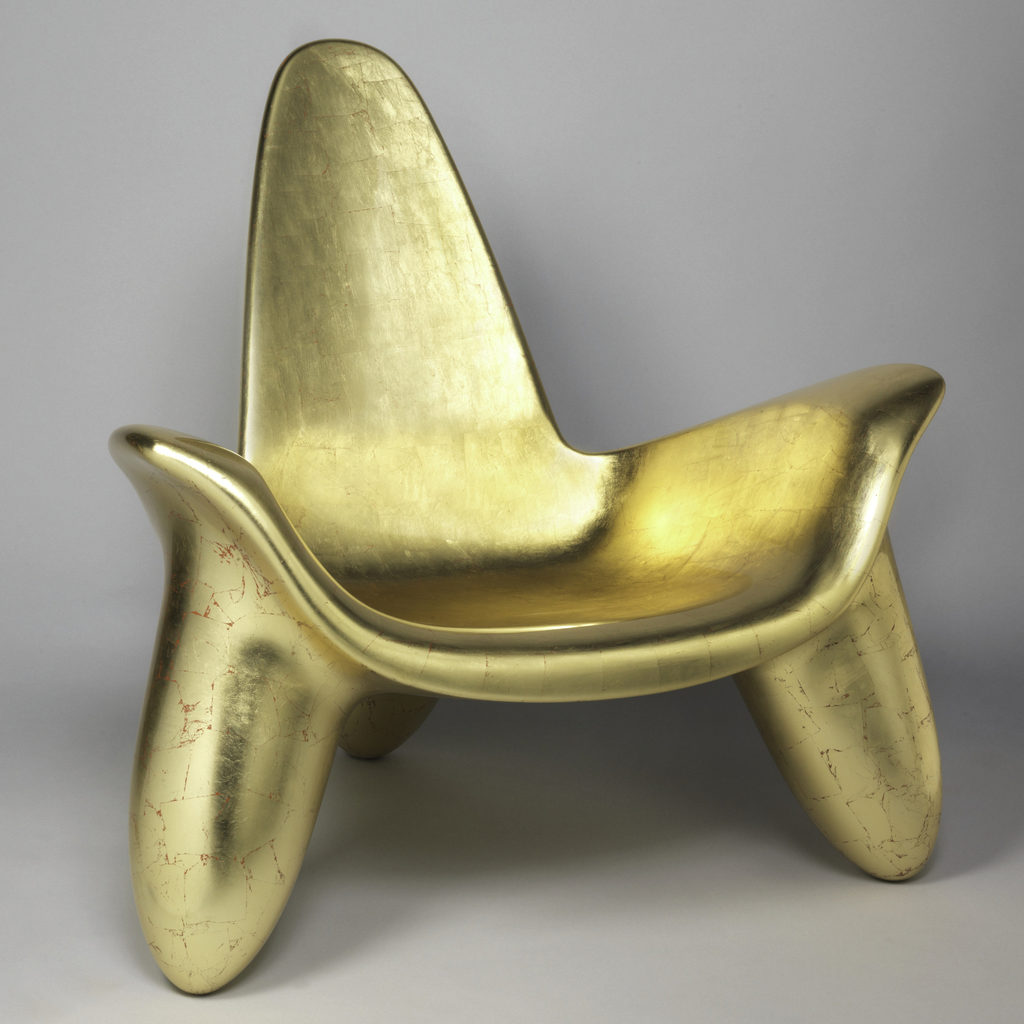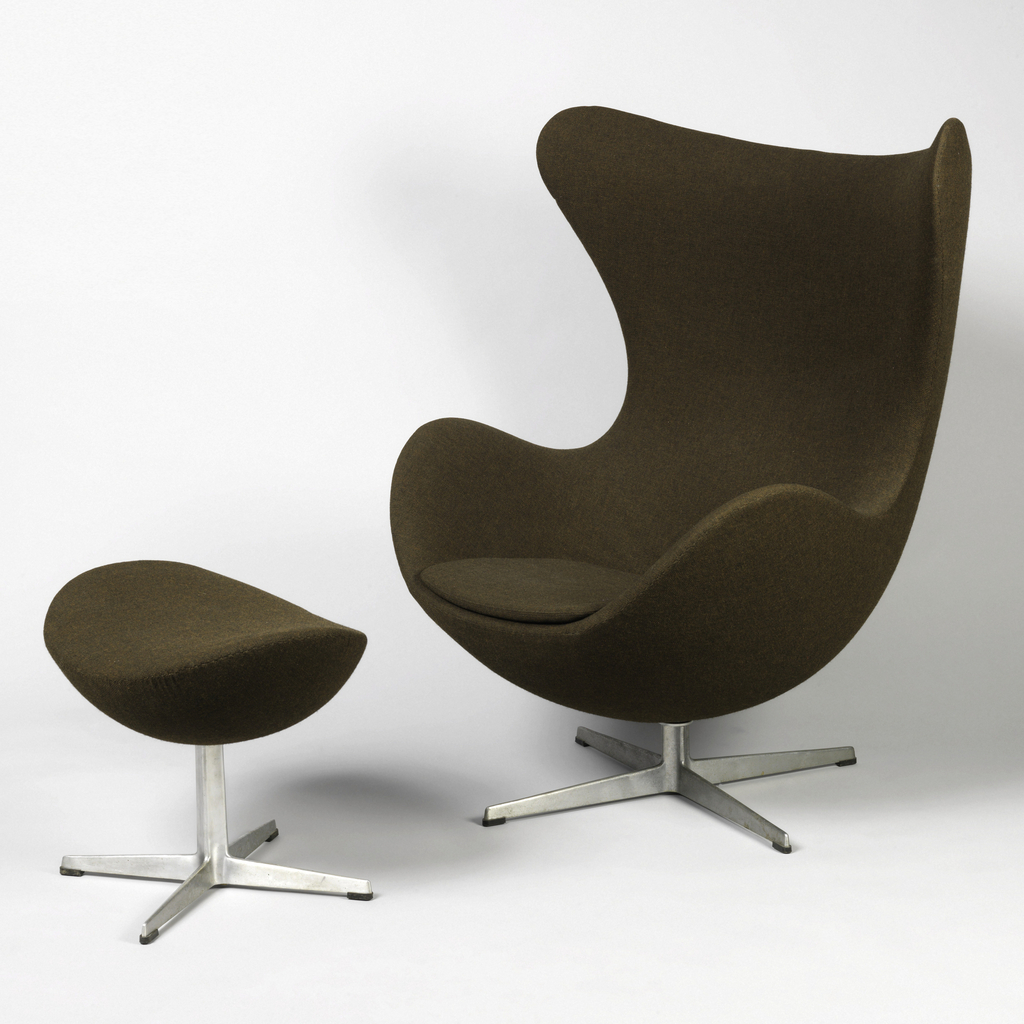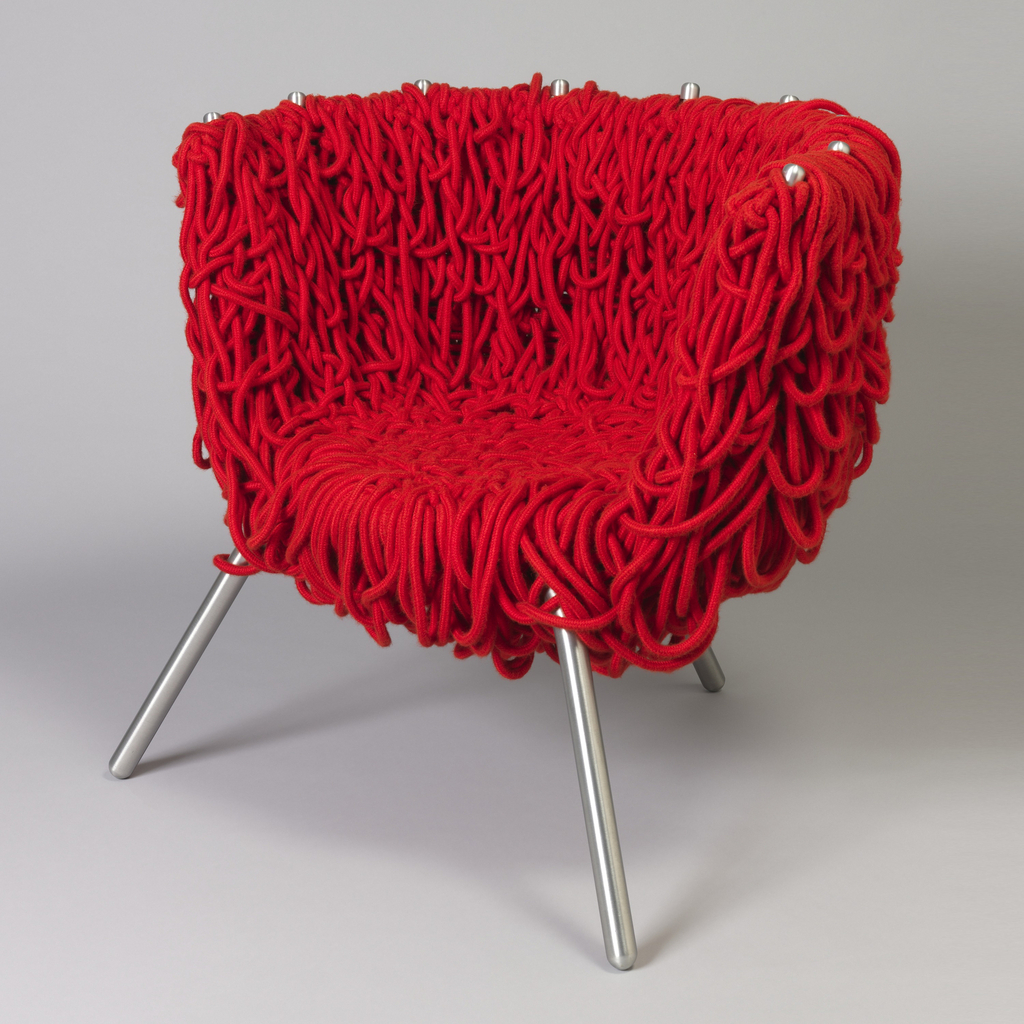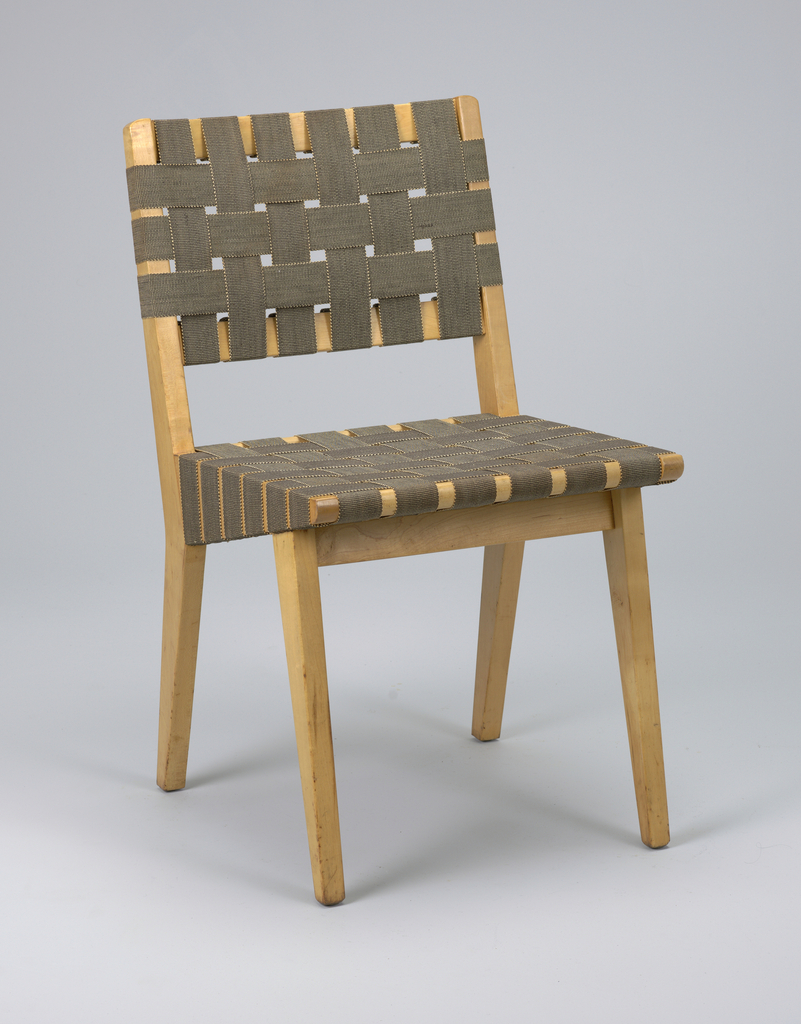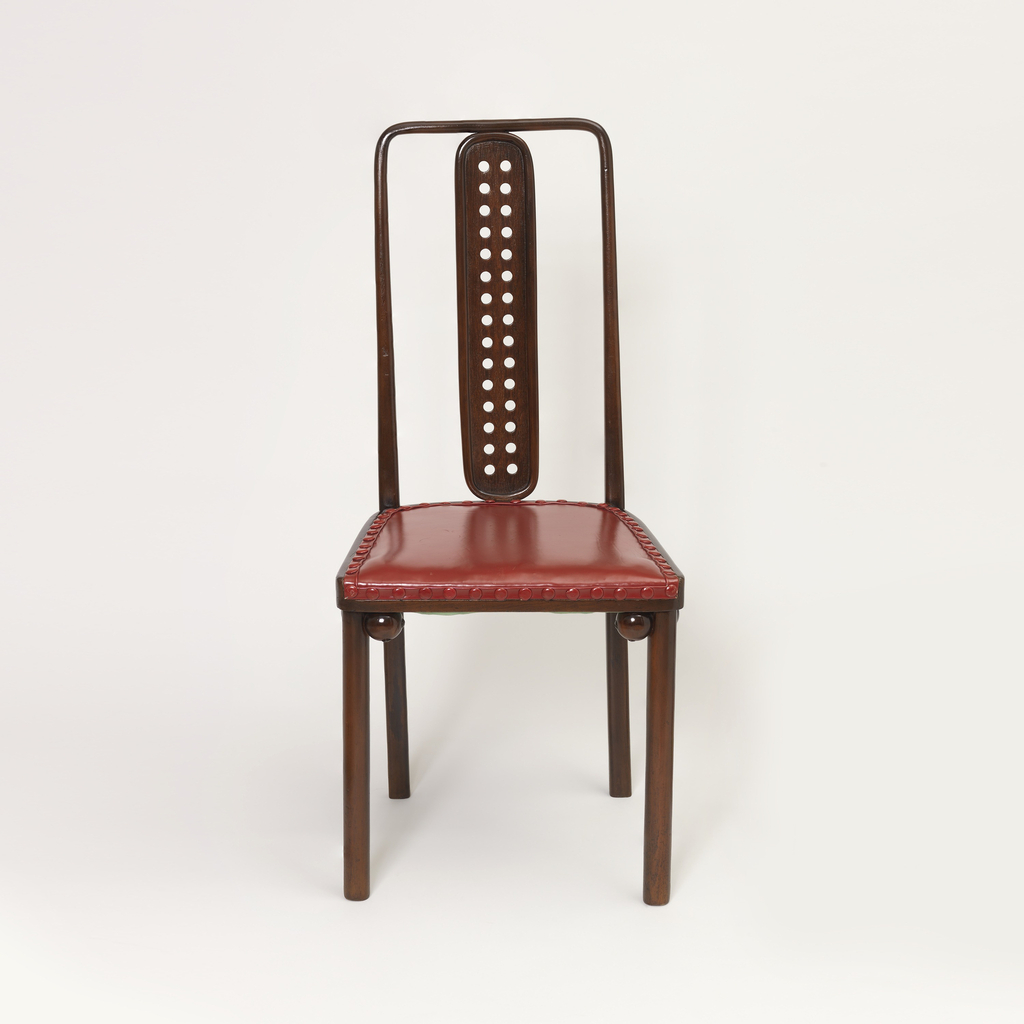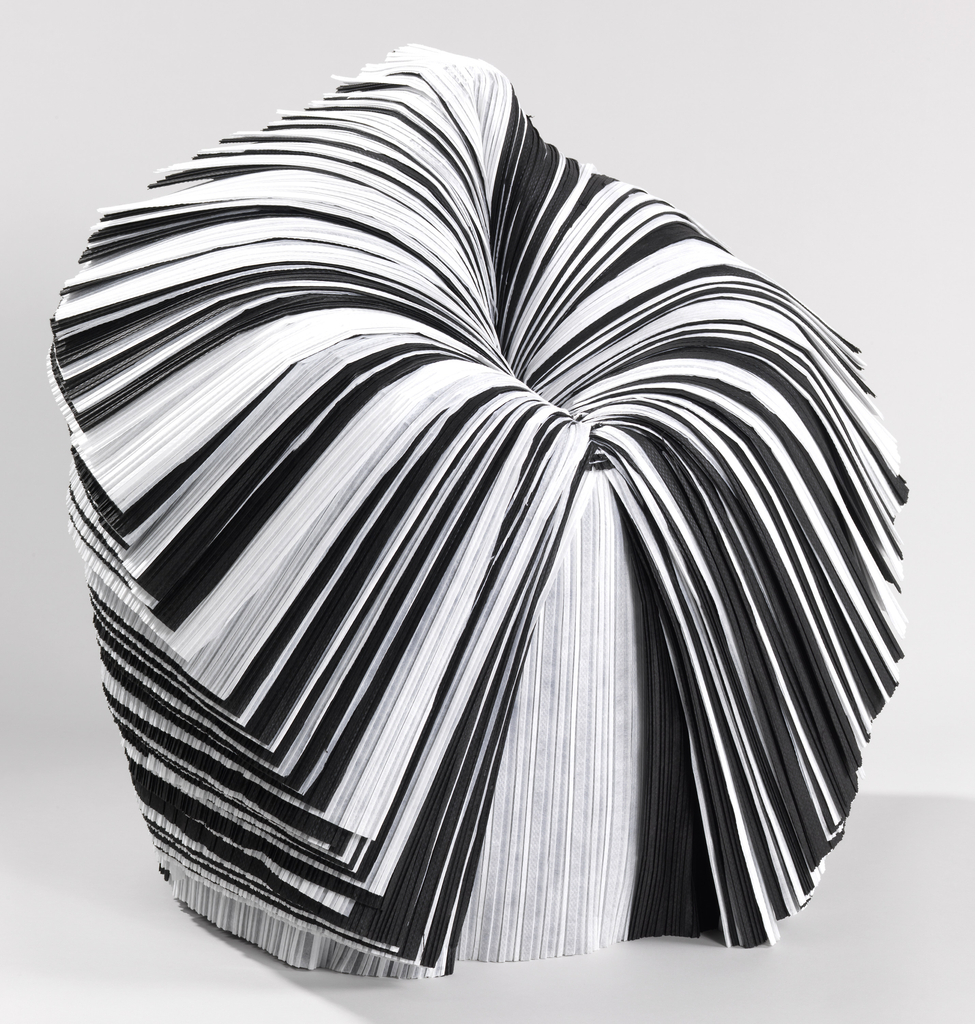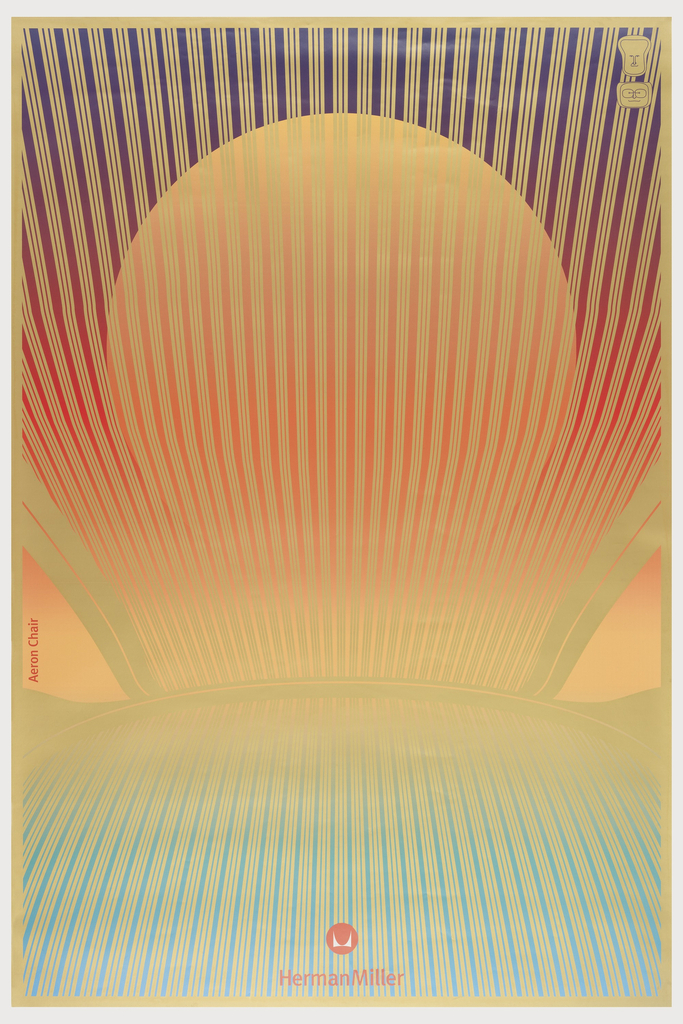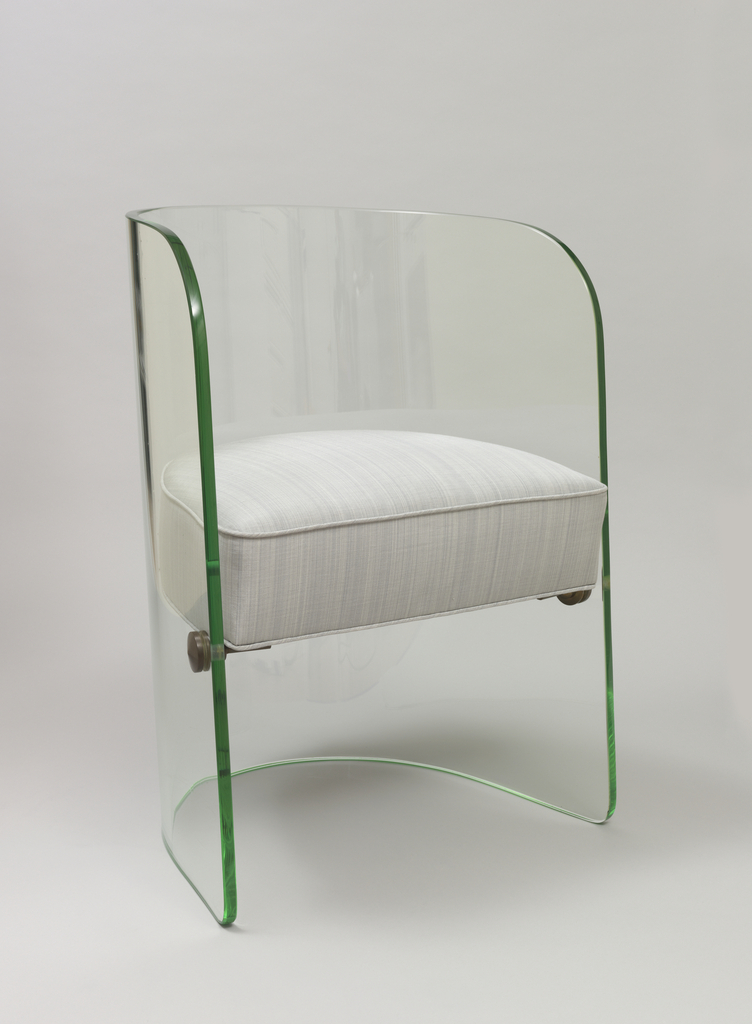In the mid-2000s, designers (and brothers) Ronan and Erwan Bouroullec, came up with the concept of a chair that would “sprout up like a plant…with its branches gently curving up to form the seat and back.” They also took inspiration from historical seating, such as English cast iron garden benches, American chairs in the rustic...
Not every chair immediately presents itself as a chair. Pared down to its basic components, this chair is a study in outline and form. It was part of design firm nendo’s first solo exhibition in England, at the Saatchi Gallery in 2010. Responding to the exhibition theme, “Outlines”, nendo created the Thin Black Lines series of...
Refined, rational, and demonstrably Dutch, this was the aim when Hendrik Petrus Berlage designed this chair for the Amsterdam-based firm, ‘t Binnenhuis (The Interior). This important architect and designer opened the firm in 1900 in collaboration with the insurance company director, Carel Henny, jeweler, Willem Hoeker, and interior designer, Jacob van den Bosch.[1] Motivated by...
Trained as a cabinetmaker in his native Bohemia, Wenzel Friedrich immigrated to the United States in 1853, settling in San Antonio, Texas, and opening a revival-style furniture business. In 1880, he became more innovative, realizing the potential of the Texan stockyards’ abundant supply of Texas Longhorn cattle horns as a material for use in furniture...
In his How High the Moon chair, designer Shiro Kuramata utilizes an industrial material, steel mesh, to give a contemporary interpretation to the traditional club chair. The shape and proportions are based on an established Western form—a bulky, deeply upholstered easy chair with a low back and deep arms—but here, Kuramata’s use of an unexpected...
The concept of “eternal” style is a bit of an oxymoron, after all, many of today’s producers and designers roll out new and improved models on a regular basis. Thinking about cars, phones, and electronics it is easy to fall prey to the idea that everything is expendable and that each new item is better...
In celebration of Women’s History Month, March Object of the Day posts highlight women designers in the collection. The Oka chair, by Michele Oka Doner, is both a utilitarian furnishing and a highly detailed sculptural piece. The chair’s seat is a flat textured disk which rests on straight, unadorned legs. The back, where all the...
The celebrated American designer Wendell Castle was known as the "father of the art furniture movement."
The Danish designer Arne Jacobsen believed in the artist’s complete control over a project. Though originally trained as an architect, he had a hand in all aspects of his buildings’ designs, including the interiors. His works might be considered examples of Gesamtkunstwerk, or the total work of art, because of his individual and obsessive control...
Vermelha, Portuguese for “red”, comes from the Latin vermiculus, or “little worm”, in reference to the Kermes vermilio, a scale insect used to make the color crimson. This is the source of the Vermelha Chair’s name, a vibrant, brightening shade of red that is both jarring and mesmerizing. Designed by Brazilian designers – and brothers...
The Model 666WSP Chair, from 1943, is an example of the furniture designed by Danish-American designer Jens Risom, who died at 100 on December 9, 2016. Risom was the son of a prominent Danish architect and he, himself, is often regarded as one of the founders of midcentury modern design in America. He came to...
A ubiquitous figure in design history, Josef Hoffmann had a career that spanned more than 50 years. The Austrian architect-designer created this chair for the dining room of the Purkersdorf Sanatorium, located just outside Vienna, and built between 1904 and 1906. Hoffmann designed both the sanatorium’s austere exterior and much of its interior. Hoffmann worked...
From the archives, a past collaboration of design firm Nendo and designer Issey Miyake.
In 2012, under the direction of Stephen Frykholm, Herman Miller, Inc. solicited proposals from a group of international graphic designers for a limited edition poster campaign that would highlight ten of their iconic products still in production. Ten posters, produced in a edition of ten copies of each, were printed and exhibited in a small...
More than 44 million people attended the New York World’s Fair in 1939 and two of the many exhibits that visitors would have enjoyed were the Glass Center, a pavilion that marketed glass as the material of the future, and the Town of Tomorrow, a faux suburb of model homes that included the House of...
